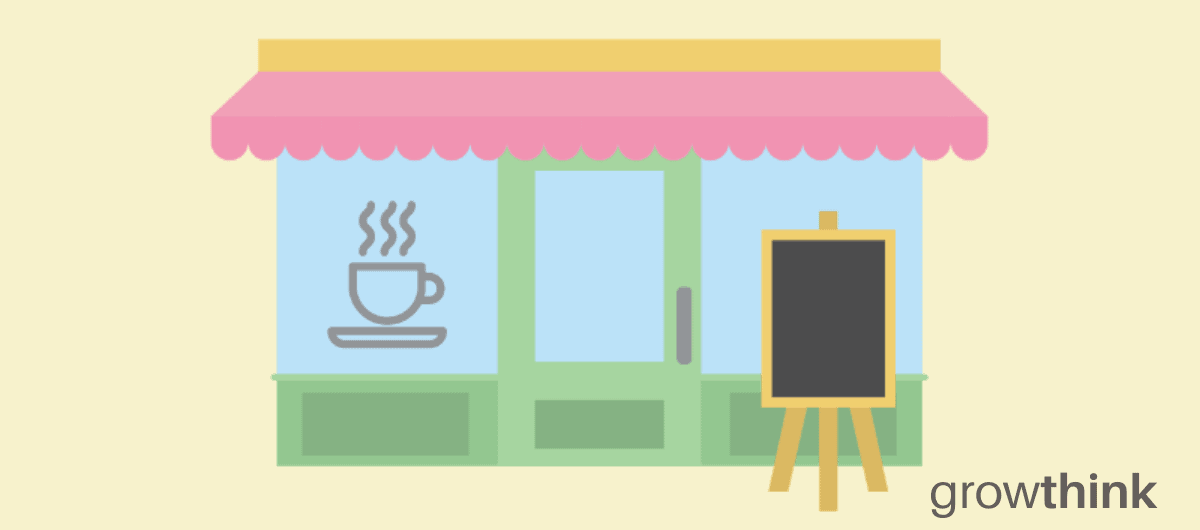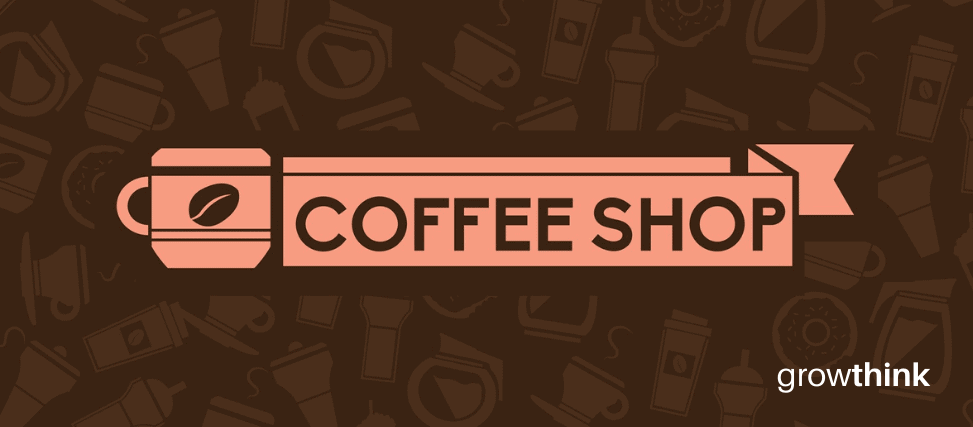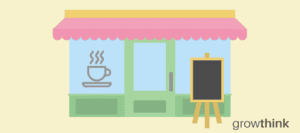
On This Page:
- 13 Steps to Starting Your Own Cafe
- How Big is the Cafe Industry?
- What are the Key Segments of the Cafe Industry?
- What External Factors Affect the Cafe Industry?
- Who are the Key Competitors in the Cafe Industry?
- What are the Key Customer Segments in the Cafe Market?
- What are the Typical Startup Costs for a New Cafe?
- Are Cafe Businesses Profitable?
- What are the Keys to Launching a New Cafe Business?
- How to Start a Cafe FAQs
- Helpful Videos
- Additional Resources
- Other Helpful Business Plan Articles & Templates
Opening a cafe can be a fun and rewarding experience, but it’s important to do your research first.
Complying to stringent safety requirements, ensuring your cafe is profitable, and staying up-to-date with local laws are just a few of the major challenges you’ll face. With so many things to think about, it can be hard to know where to start.
In this article, we’ll help you get your cafe up and running with everything you need to know.
Importantly, a critical step in starting a cafe is to complete your business plan. To help you out, you should download Growthink’s Ultimate Business Plan Template here.
13 Steps to Starting Your Own Cafe
1. Decide what type of cafe you want to open.
There are many different types of cafes, so you need to decide what type of cafe you want to open. Your decision will affect everything from the type of products you offer to how much space you need. Many cafes have a unique selling point, so it’s important to research your competition thoroughly before getting started.
2. Write a cafe business plan.
Having a well-organized business plan is critical to the success of your cafe. This document will help you define your target market, outline how you intend to be competitive, and provide projections for key financials. It also includes an executive summary which is crucial if you are seeking funding. A cafe business plan is an essential part of any successful business, so make sure you have one before opening your doors. You can also download our successful coffee shop business plan pdf here. This is a business plan template you can use in PDF format.
3. Secure funding.
Opening a cafe is an expensive proposition. You need to consider everything from the cost of your location, equipment, and renovations to hiring skilled staff, marketing the business, and buying inventory. This means you’ll probably need some extra capital before your cafe can open its doors.
Incorporate Your Business at the Guaranteed Lowest Price
We are proud to have partnered with Business Rocket to help you incorporate your business at the lowest price, guaranteed.
Not only does BusinessRocket have a 4.9 out of 5 rating on TrustPilot (with over 1,000 reviews) because of their amazing quality…but they also guarantee the most affordable incorporation packages and the fastest processing time in the industry.
Incorporate with BusinessRocket at the guaranteed lowest price now.
4. Find the perfect location for your cafe.
The right location is key to the success of your cafe, so it’s important to look around carefully before you choose a space. While it’s great to be near local amenities and busy transport links, the rent and size of the property will affect your bottom line so take this into account when searching for a space.
5. Look into licenses and permits.
Before you start your cafe, you’ll need to apply for the appropriate licenses and permits. These can vary wildly depending on where you live so it’s important to research carefully before opening your cafe. Failure to comply with local regulations could result in fines or even closing your cafe, so you must stay on top of these every step of the way.
6. Plan your menu and interior design.
The key to success in the cafe industry is offering customers high-quality products at affordable prices, so it’s important to do your research when planning your menu. What kind of food will you sell? Will you offer quick foods like pastries and bread, or will you be serving food such as sandwiches, soups, etc.? How much food should you buy per day? How much will ingredients cost? These are all questions you need to answer before you start your cafe.
7. Order equipment for your cafe.
Be prepared to spend a lot of money on equipment for your cafe. You need to have proper tools to make quality food, so be sure that you are ready to shell out the cash before opening day. This will help ensure that you can serve up some tasty treats from day one.
Finish Your Business Plan Today!
If you’d like to quickly and easily complete your business plan, download Growthink’s Ultimate Business Plan Template and complete your plan and financial model in hours.
8. Research and choose the proper POS system.
Having the right point of sale system is critical to running any retail or service business, so it’s important to choose a payment processing solution that works well for your cafe. You should research your options thoroughly before choosing a POS system as you want to be sure that this will help make day-to-day tasks easier.
9. Hire staff.
You are going to need some help when it comes time to run your cafe so be prepared on day one by hiring appropriate staff members who are hard-working, upbeat, professional, reliable, and courteous with patrons/customers. Doing this will assist you in being able to provide your patrons with great food and drinks.
10. Increase inventory levels.
You also need to increase your inventory levels for when it is time to open your cafe by doing things such as buying ingredients in bulk, which will reduce the cost per item and save yourself some money. Also consider finding suppliers who offer wholesale prices that you can purchase from and pass onto your customers to keep them coming back for more.
11. Market your cafe.
Marketing is key to success in the cafe industry so you need to be prepared before opening your doors. One effective way of marketing is through a Google My Business profile which allows your small business to show on Google Maps and local searches near your physical location. You can also use social media like Facebook and Twitter, which will help generate interest in your cafe and bring potential customers through the doors. Also, consider putting up flyers that let people know about your new cafe or having a grand opening that people can attend to check out your new business venture.
12. Open for business.
Make sure you are prepared on the day of your grand opening, which means having completed all your renovations, hiring staff members, and stocking up on equipment and inventory items. One way to ensure things go well is by creating an emergency plan that includes a backup for every piece of equipment and a list of potential problems that may arise.
13. Maintain your cafe.
Finally, maintaining your cafe means constantly seeking new ways to bring customers through the door by offering great service and delicious food at affordable prices. Also, consider hosting local events such as open mic nights or book signings that will entice customers to come in and try your wares.
How Big is the Cafe Industry?
With over 11,460 establishments, cafes and bakery cafe shops make up over one-third of the restaurant industry and their numbers are on the rise. Today, the cafe industry is about $11.7 billion and is forecasted to grow at a rate of 3.6% over the next 10 years.
What are the Key Segments of the Cafe Industry?
- Take-Out Cafe: this type of cafe focuses mostly on take-out orders and quick service.
- Restaurant Cafe: this type of cafe offers patrons the chance to dine in and enjoy some drinks.
- Casual cafe: also known as a corporate, student or co-working cafe, this type of cafe caters to people who are on the go and need a quick meeting location.
What External Factors Affect the Cafe Industry?
Many external factors can affect the cafe industry. The most important ones are the economy, politics, and technology.
Economy
The economy is a major factor that can affect the cafe industry and market. When the economy is doing well, people have more money to spend on leisure activities like going to cafes. However, when the economy is doing poorly, people have less money to spend on leisure activities, which can hurt the cafe industry and market.
Politics
Politics is another major factor that can affect the cafe industry and market. For example, if there is a change in government or if there is a new law that affects the cafe industry, that can have a big impact on the industry and market.
Technology
Technology is also a major factor that can affect the cafe industry and market. With new technologies, cafes can get more business, which can expand the industry and market.
Who are the Key Competitors in the Cafe Industry?
The key competitors in the cafe industry include:
Panera Bread: Panera Bread is a chain of restaurants that was founded in Missouri in 1978. Panera differentiates itself from other fast-casual restaurant chains such as Chipotle and Noodles by providing fresh gourmet bread baked on-site at their cafes daily. In addition, they commit to serving authentic artisan bread and pastries made with simple ingredients.
Starbucks: Starbucks was founded in 1971 in Seattle, Washington. They currently have over 20,000 stores worldwide. In addition to their coffee, they serve a variety of other drinks including tea and espresso. Starbucks has been able to spread its brand identity through social media marketing efforts when people take pictures with their Starbucks cups when going out with friends or traveling.
Caribou Coffee: Caribou Coffee is a Minneapolis-based company that was founded in 1992. It currently operates around 500 locations across 23 states and its mission is “to create a culture of warmth and belonging, one person, one cup and one neighborhood at a time.” Caribou Coffee has an extensive food menu that includes items such as crepes, sandwiches, wraps, bagels, and fruit parfaits.
What are the Key Customer Segments in the Cafe Market?
There are various key customer segments in the cafe market. The most important of these include:
Young Adults: Young adults are a key customer segment in the cafe market because they typically go out to cafes with their friends after school or work. They usually spend more money on going out to cafes compared to older age groups.
Older Adults: Older adults are also a key customer segment in the cafe market because they also like going out to cafes with friends or family members.
Tourists: Tourists are another key customer segment in the cafe market because they often want a new experience when traveling and going out for a cup of coffee is something that many new cafes offer.
What are the Typical Startup Costs for a New Cafe?
A lot of startup costs for a cafe can depend on the type and focus of the cafe.
The typical startup cost for a small cafe or coffee shop is between $25,000 – $150,000, which includes food, beverage, and cleaning equipment, furniture such as comfy chairs, sofas, and tables, and signage to attract the local community. The most basic and traditional cafes will require relatively low startup costs since they often only serve espresso, coffee, tea, and serve food such as pastries and bread.
Expenses may include:
- Furniture, Fixtures, and Equipment ($25,000)
- Signage ($3,000 – $10,000)
- Initial Inventory ($1,500 – $10,000 for coffee beans & equipment)
- Licenses and Permits ($1,500 – $2,000 per year)
- Insurance ($5,000 – $8,000 per year)
- Marketing ($1,000 – $2,500 for initial marketing efforts)
- Legal and Accounting Fees ($3,000 – $8,000 per year)
- Utilities ($1,000 – $4,000 per month)
- Maintenance Costs ($5,000 – $10,000 per year)
- Payroll Costs ($24,000 – $36,000 per year)
Other key costs associated with starting a cafe include:
- Build-out costs: You may need to hire a contractor to do some of the work in your space, such as electrical work or plumbing. The costs associated with hiring a contractor will depend on their rates but you should expect to spend at least a few thousand dollars before opening your doors.
- Rental space: This will vary depending on the location of your cafe, but typically ranges from $1,000 to $5,000 per month.
Is a Cafe Business Profitable?
Owning a cafe can be extremely profitable in the right conditions. You’ll need to have an ample supply of customers that are willing to pay premium prices, but in return you should receive higher margins than other retail business models. If your product is also unique, you can expect it to be even more successful.
Finish Your Business Plan Today!
If you’d like to quickly and easily complete your business plan, download Growthink’s Ultimate Business Plan Template and complete your plan and financial model in hours.
What are the Keys to Launching a New Cafe Business?
To succeed in the cafe business, it is important to plan ahead. Here are some keys to launching a cafe:
1. Know your target audience.
Do your research and figure out who your ideal customer is. This will help you determine things like the type of food and drinks you serve, as well as the ambiance and atmosphere you create in your cafe.
2. Choose a good location.
When choosing a location for your cafe, consider things like foot traffic, competition, and lease rates. Ideally, you want a spot that is accessible and visible to your target market.
3. Create a strong branding and marketing strategy.
Your branding should reflect the personality of your cafe and the products and services you offer. Your branding should also clearly communicate your value proposition to your target market.
As for your marketing plan, you should budget at least $500 per month to promote your cafe. You may want to consider offline marketing techniques, such as flyer distribution and print advertisements, as well as online marketing strategies, such as social media, blogging, paid ads on Facebook and Instagram
4. Design a great cafe layout.
The layout of your cafe plays an important role in attracting your customer base and encouraging them to stay and order more food and drinks. Think about what is most important to you: Having a lot of space for people? Providing cozy corners where they can relax? Or designing something that stands out from other existing businesses? All of these are possible with some careful thought about design elements like furniture, lighting, artwork, music, etcetera.
5. Hire the right employees.
Good staff is crucial for success in any business, but especially in cafes where quality customer service is so important. Find people you trust who share your values and understand what your cafe is all about—everything from how you want your patrons treated to how often drinks should be refilled—and hire them!
6. Keep detailed records of everything related to your cafe’s operations and finances.
With good records of how well your business is performing at any given time, you can make data-driven decisions about things like pricing and menu engineering (making changes to the ingredients and quantities used to prepare items on your menu). Your records should include financials, sales numbers, and inventory levels.
How to Finish Your Ultimate Business Plan in 1 Day!
Don’t you wish there was a faster, easier way to finish your cafe business plan?
With Growthink’s Ultimate Business Plan Template you can finish your plan in just 8 hours or less!
Click here to finish your cafe business plan today.
How to Start a Cafe FAQs
How much money do you need to open a cafe?
While it can vary depending on the location, size of your cafe, and the number of employees you hire, you should expect to invest anywhere from $50,000 to $250,000 just to get your cafe up and running. This includes things like equipment purchases, renovation costs if needed, construction expenses, etc.
If you don't have enough money to start your dream cafe, seek outside funding from sources like family and friends, a small business loan, credit cards, and other forms of financing.
What licenses are required for a cafe?
A variety of local licenses may be required when opening a cafe. These include health permits, fire safety certificates, a food service license, and food handlers' permits in certain locations. This is in addition to the business license necessary to open a business. If you plan on offering alcoholic beverages, you may also need a liquor license. Make sure you research the proper licenses required for your specific location.
What are some tips for creating regular customers?
Offering excellent customer service is one of the best ways to create loyal customers. Encourage your staff to follow up with every customer and treat them like friends they haven't yet met. You can also provide incentives for frequent visits, such as offering free refills or creating loyalty programs where customers earn rewards based on purchases.
Helpful Videos
Starting a Coffee Shop Business: Part One (Planning)
Additional Resources

 Business Plan Template For Small Businesses & Entrepreneurs
Business Plan Template For Small Businesses & Entrepreneurs Coffee Shop Business Plan
Coffee Shop Business Plan Cafe Business Plan
Cafe Business Plan